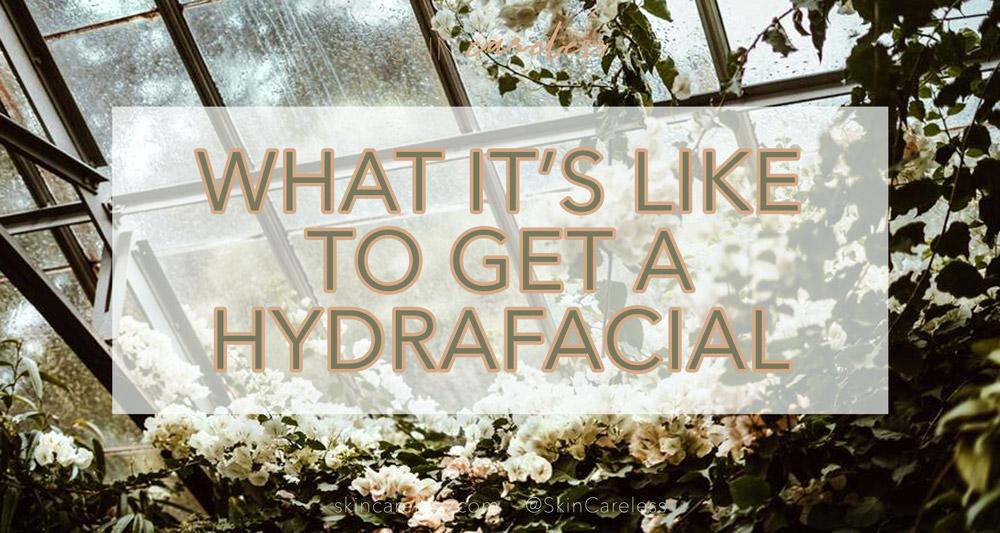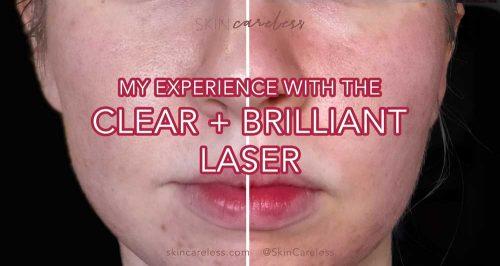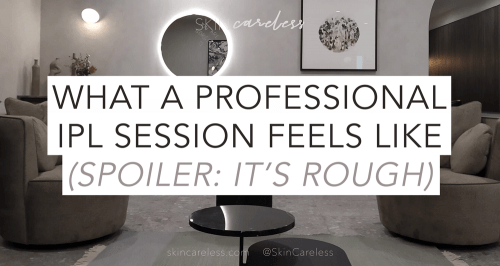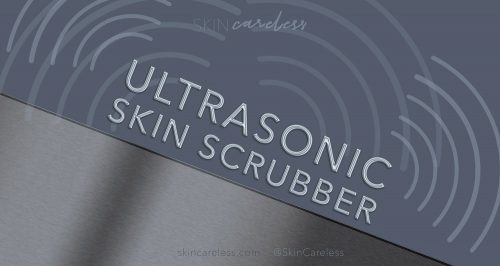Recently, I set out on a quest to clear up my skin with some professional help. Two weeks after my initial consultation appointment at my local skin clinic, I was back in their office and ready to start the first of my recommended series of treatments: a Hydrafacial! Firstly, let’s explore what a Hydrafacial is and what it costs.
How much does a Hydrafacial cost?
Hydrafacials at the clinic where I live (in a major city of Australia) cost around $250. The treatments at my specific clinic are on the more expensive side as they’re performed by registered nurses. You can get discounts by booking several in advance, but even so it’s quite expensive. I’m certain you could shop around and find a more competitive price.
What does a Hydrafacial do? (What they claim + what skin types it’s suitable for)
The Hydrafacial is a no-downtime facial for all skin types, that infuses skin with moisturising and anti-ageing ingredients and exfoliates chemically and physically, all using a special vacuum tip on a handheld machine. It claims to reduce fine lines, wrinkles, pigmentation and acne while soothing the skin and providing anti-ageing benefits. You can find out more from their website. It’s non-invasive and non-ablative and so is safer for a wide range of people than many of the other skin treatments available.
The Hydrafacial machine and procedure
The Hydrafacial is performed in a treatment room as you lie down. There is a large machine on wheels with a flexible arm that is attached to a small, handheld nozzle. To start the treatment my nurse cleansed my face with a foaming cleanser then wiped it back off with a warm cloth.
First up for the Hydrafacial itself was a cleansing solution that was spread onto my skin and also vacuumed back off through the machine which touches your skin via an exfoliating head. It feels a lot like a cat’s tongue – damp, rough and grippy. She went over my face in long strokes, going over everywhere about 3 times in total, which took roughly 5 minutes. The second step – a mixture of chemical exfoliants (glycolic and salicylic acid, to be specific) – was also applied to the skin through the machine, then rubbed in by hand and left for perhaps 20 seconds before being similarly vacuumed away in the third step. This time the vacuum head was less rough but the suction was stronger. By the end of it, my sensitive skin was left feeling a tiny bit sore. But not to worry, as the final step was depositing soothing serum on to complete the treatment.
My nurse then applied some moisturiser and a sunscreen so I was ready to head off to work. The total treatment time was about 20 minutes from start to finish.
My Hydrafacial results (immediate and long-term)
Right afterwards, my skin had a satiny, non-greasy glow. It wasn’t red or irritated despite the rough feeling of the exfoliation that the vacuum head gave. The fine lines on my forehead seemed a little bit reduced, but not enough to make me incredibly impressed.
Two weeks later the dry skin and flakiness on my nose has yet to return and my skin still feels quite soft and hydrated, perhaps more so than before. I’ve had less acne than usual, and my forehead in particular is feeling really smooth, though this is my least-problematic area and I do have a pretty bomb skin care routine so I can’t say with certainty that the Hydrafacial is to thank.
My thoughts
The physical and chemical exfoliation along with anti-ageing ingredients like peptides that the Hydrafacial provides are good for those with a routine deficit where they’re missing these key elements of care. But for most, the Hydrafacial is just a good thorough ‘prep’ for a big event or before a laser treatment. It’s too expensive to replace good habits in your routine.
Much like many other treatments, clinics recommend coming back for several treatments to see the best results. However, I don’t feel that there is the scientific evidence backing up the results aside from placebo and surface hydration that would tempt me to spend more money on this on a regular basis. The vacuum is a bit of a gimmick that doesn’t offer much more than cleaning up a few sebaceous filaments.
Above all else, the Hydrafacial reminded me of the benefits of combination chemical and physical exfoliation, which I’d forgotten. Now I’ve incorporated back a little bit of physical exfoliation (with my Clarisonic) I feel as though I can see better results from my other products and my skin is softer.
Comparing the Hydrafacial to at-home options
I think the science behind the Hydrafacial is something you could replicate quite well at home. You can use daily acids in your routine and even purchase low-grade peels like the ones used in this treatment to chemically exfoliate. You could get a similar or perhaps better deep physical exfoliation by learning to dermaplane your skin or just by using a Konjac sponge. You could and should incorporate antioxidants, peptides, and soothing, hydrating ingredients into your everyday routine. You could do all this at home for a fraction of the cost of a Hydrafacial treatment. I believe a Hydrafacial offers convenience that these methods don’t – it’s fast, no-fuss and all at once, but this comes at a price. Whether you’re willing to pay that price is up to you.
I would consider doing this treatment again for the satin glow and silky skin it gave me – most likely before a big event – but I will not be making a Hydrafacial into a regular appointment. I think my routine covers most of my skin care and maintenance needs, and I didn’t see miraculous improvement in my skin. Perhaps I’ll come back for another after I complete the rest of this series of treatments and I have some cash to spend. I would really recommend this for people who have neglected their skin care and need some help getting back on track.
Next up in my Skin Rehab adventures was trying out LED Light Therapy – and it certainly surprised me! It’s some seriously interesting skin care science.






[…] since first getting a Hydrafacial, I’ve been really drawn to the idea of recreating the technique at home. After all, I know a […]
[…] recommend learning about the Hydrafacial and Laser Genesis, but there’s such a huge range and it all depends on what your […]
[…] the treatment, I first had a Hydrafacial followed by a moisturising mask. Then, while the mask soaked in, I went under a large folding panel […]